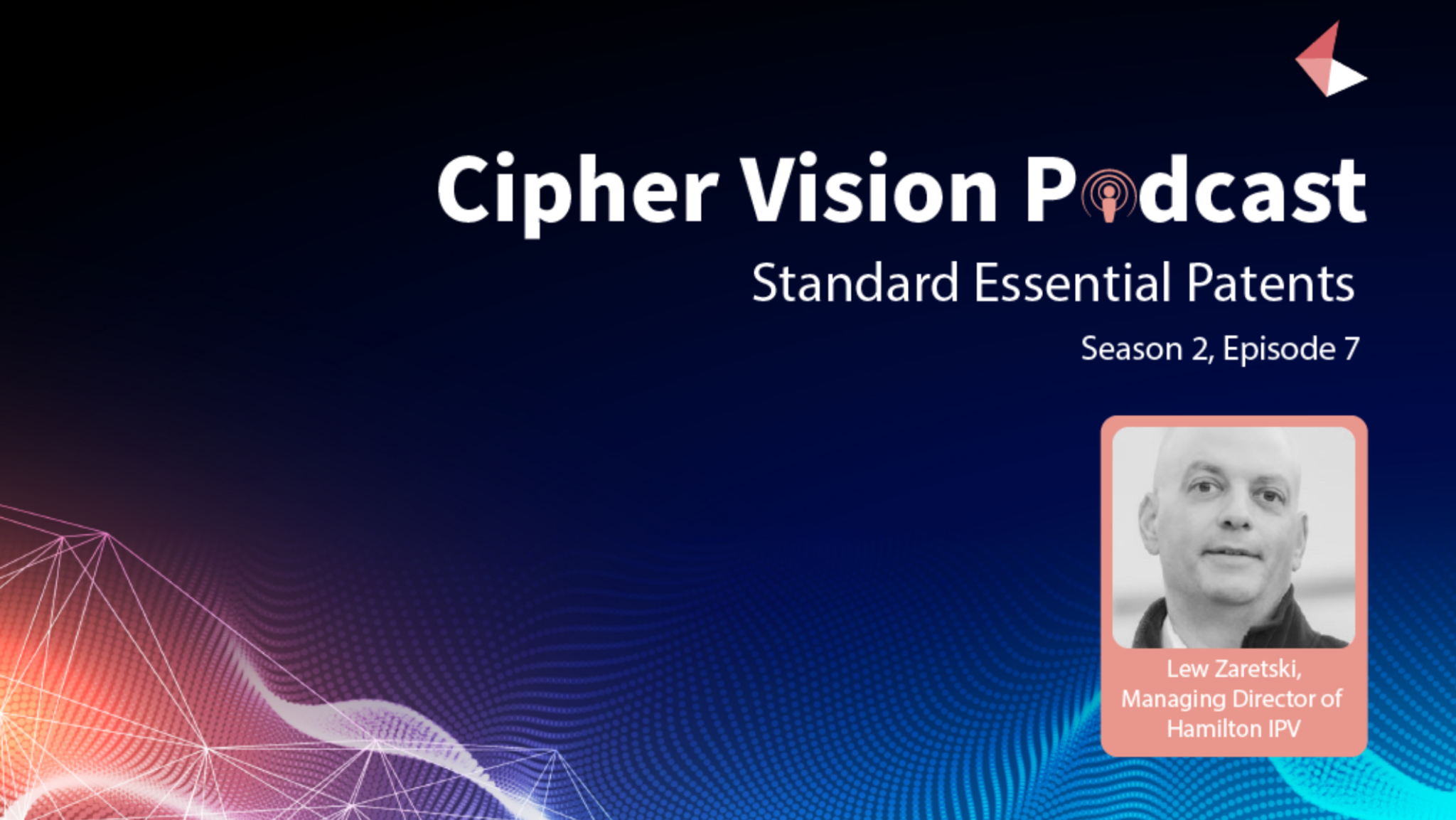Standard Essential Patents

Guest:
- Lew Zaretzki, Managing Director of Hamilton IPV.
Episode Highlights
Understanding standard essential patents
One aspect of a patent, that can serve as a merit for that patent, is a mapping of the claim to some kind of useful product or service, and in general that’s done mechanically to a physical product or some kind of existing service.
In the case of a standard essential patents, it’s done to a technical specification that’s shared in industry. And there are a huge number of these that exist, most famously in wireless communications with standards like 5G or WiFi.
On the scale of SEPs
With some co-authors and friends I’ve been working on a series of research at Hoover Institution and Stanford for at least six years and we quantify this in the mobile space.
And what we tend to find is that there is something like $10 or $11 billion a year produced in cash, flowing from licensees to licensors in this space and that’s just to the leading players like a Qualcomm, Nokia, Ericsson, InterDigital people like that.
If you go back and look at the time series, it’s pretty steady. The face has changed, so at one point, while some of these companies weren’t always focused on patent licensing but entered and grew big businesses, most recently Huawei for example.
And perhaps there might have been some other people that declined or exited but in the end the total doesn’t change very much.
On finding equilibrium
All parties are acting individually pursuing their own goals, and adversarial to each other very often. But when you put it all together, it winds up at this sort of equilibrium that I described.
And so you could say that when these people all get together and fight a lot, they produce this result, which is fairly stable.
You could think of it almost like antagonistic muscle groups. If you wanted to have really strong biceps, you probably would have to also train the triceps. They’re related.
If everybody pursues their interests, whatever those are, to the best of their ability, and that’s all combined together in the market, we get this equilibrium that we do have.
There’s a great Nobel winning economist named Ronald Coase and one of his results, that’s very interesting, he said something to the effect that to increase social welfare, reduce transaction costs.
If you could give everybody the tools to do their job better, you know, facts for example, so that they could make fact based decisions then those transaction costs go down and they pursue their aims more effectively and efficiently, whatever those aims would be, even if those aims are at cross purposes with other people in the market.
Current SEP initiatives
The goal is to provide IP executive decision makers with the best facts and the best data set about the 5G SEP landscape and to do that by compensating for the incentives and disincentives on the standard side to produce the right decisions.
And to do it collaboratively by getting companies together to share the costs and the effort and the results.
We hope that this shared perspective will enable people to do what you all had talked about before, which is reduced transaction costs and get to their conclusions more quickly.
Bringing transparency to SEPs
In these sub areas where licensing is most prolific, firstly in cellular and secondly, in audio and video codecs there’s always this desire to figure out insights about the landscape because that’s important in thinking about who the licensors might be and who the licensees may need to get licenses from.
And that goes into any kind of economic calculations about the amounts and how they might be divided up. And so HEVC was an area that we thought could use some help and we had clients who needed that help and wanted it.
When I met Steve (Harris), through you, we discovered together that there might be a way to do this using machine learning.
That was the inspiration, you solve practical problems for clients using new tools that have not been used in this way before.
Current trends in the IP landscape
Since I joined the industry, I think we sort of entered into what I call an age of alliances. And we’ve seen much more interest and activity around companies collaborating, to build and share new capabilities of different sorts.
In general, these capabilities are probably not strategic or differentiating, but they’re useful.
If we go back to the earliest juncture, when I was in the industry, we were seeing the development of Intellectual Ventures, which would provide a capability to sweep up huge numbers of patents and provide license to them for their early members.
And then following that, we saw that the AST, the OIN, LOT Network, RPX, Unified Patents, various other structures created over time, but all of them having this common theme that companies could work together, share the costs, share the capabilities, and do a better job.
What does the future hold?
I think if we keep working on these trajectories on the sort of data and tools and the shared capabilities, the industry could look forward to further improvements in efficiency.
I’d hoped we could all be inspired to imitate the productive behaviors we see in places like finance and marketing and move our field ahead quickly, to a better place where we make better decisions, more quickly and more confidently, and improve our accuracy and productivity.
Nigel’s key takeaway
To get a sense of scale, a recent IHS report estimated that over 13 trillion of revenue from 5G will be generated by 2025, and over 250 billion of investment in 5G, CapEX and R&D every year.
So it’s not surprising that those who invest in developing the standards want to receive a fair award for that investment.
But the scale also goes some way to explain why perceptions of what is fair, differ considerably from the perspective of the payer, and the receiver.
But here’s where the likes of Lew comes in. It’s okay to have disagreements of opinion, but less helpful to have disagreements on the facts. If there is objective evidence in areas, such as which patents are actually essential to the implementation of a standard.
Success should never be defined by reference to a silver bullet. And I totally buy into Lew’s idea of chipping away at everything that is not true. So there is less to disagree about and easier to find the compromise that’s always there within.

Looking for new ways to classify patent data and create bespoke technology clusters?
Find out how you can use the LexisNexis Cipher Classification system to read 44m+ patents globally and pull the relevant patents into a classifier defined by you and avoid the hard work of going and finding the right patents.
